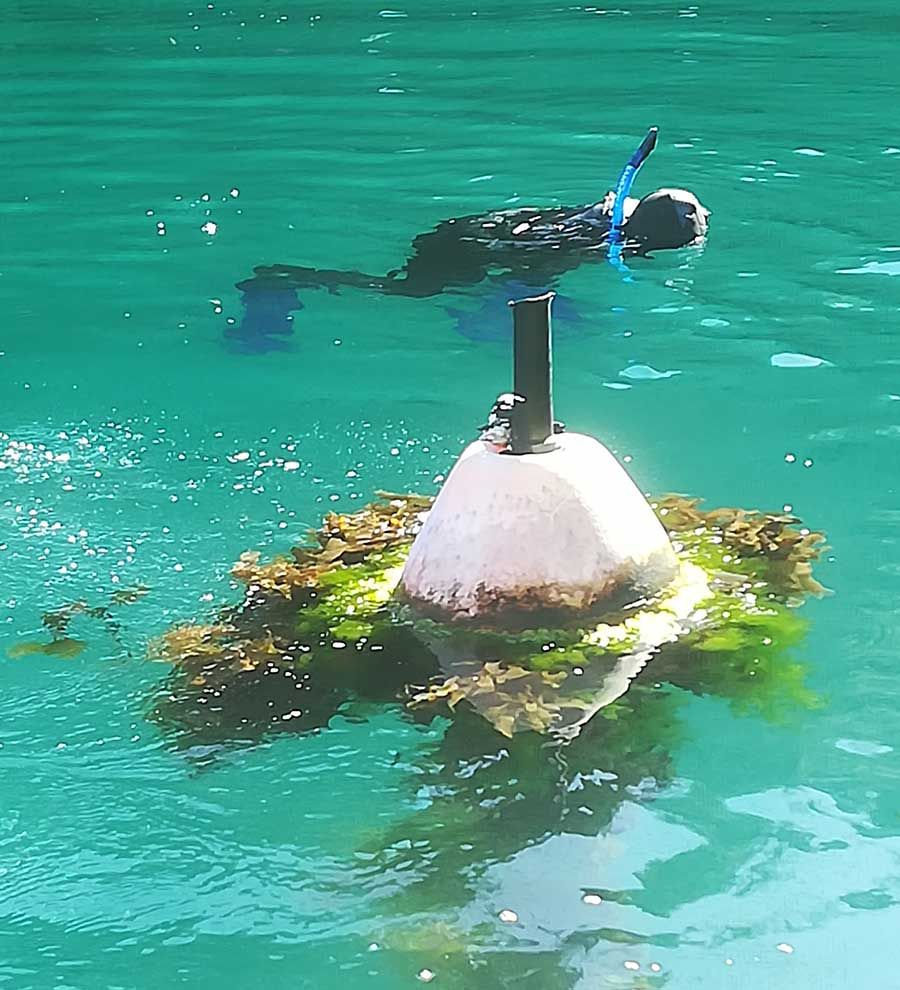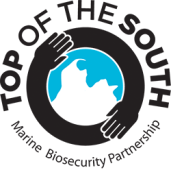Marine Biosecurity Information
Marine Biosecurity Information
Guides
Marine Biosecurity Rules and Requirements for TOS
This booklet summarises the biosecurity rules and requirements applying to domestic vessels entering and operating in the Top of the South Island.
This summary distinguishes between rules made by Councils and central Government and requirements imposed by facility managers such as marina operators.
Marine biosecurity rules and requirements for the top of the South Island September 2021:
Anti Fouling Guidelines
The correct use of anti-fouling paints is critical for preventing spread of harmful biofouling organisms. Correct use means choosing the paint that's best suited to your vessel and its operating profile and applying it correctly so that it's effective. This is a guide to getting your anti-fouling right.
Intertidal cleaning of vessel hulls
Guide to intertidal cleaning and anti-fouling of vessel hulls in Tasman and Nelson.
In-water cleaning of vessel hulls
Guide to in-water cleaning of vessel hulls in the top of the South Island.
Technical guidance on biofouling management for vessels arriving in NZ
This document presents technical guidance for managing the biofouling risk of short-stay vessels arriving to New Zealand. March 2018.
New Zealand's marine pest identification guide
This guide contains the top 11 marine pest species that we don't want in New Zealand. You can help us by reporting any suspect marine animal or plant.
Incursions
Incursions and near miss register
Register of incursions and near miss events that is regularly updated.
Latest update 13 September 2023.
Incursion exercise brief
A marine biosecurity incursion exercise was conducted by the Top of the South Marine Biosecurity Partnership at Port Nelson on 15 May 2013. The aim of this exercise was to test the effectiveness of the top of the South Partnership response procedures in the event a marine biosecurity threat is discovered. A secondary aim was for participants to learn by being involved or observing the exercise.
Marine pests
Exotic seaweeds Caulerpa brachypus and Caulerpa parvifolia
Exotic seaweeds Caulerpa brachypus and Caulerpa parvifolia have been found in waters at Great Barrier Island (Aotea) and Great Mercury Island (Ahuahu). These exotic seaweeds can spread rapidly and could affect native species. Find out about these seaweeds and what's being done.
Marine pest poster
A2 size marine pests poster. Hard copies available free to people within the Top of the South region. The poster details the marine pests that are currently present in New Zealand, as well as the ones we need to watch out for, and what to do if you find them. If you would like a poster, please email us with your details. Note: For those outside the region there will be a cost of $20 + postage.
Background information on Mediterranean fanworm
Mediterranean fanworm (Sabella spallanzanii). Cawthron Institute was commissioned by Marlborough District Council under the Ministry of Science and Innovation's Envirolink medium advice grant scheme to conduct a desktop assessment of key technical information relating to this species, and provide an evaluation of the invasion potential and considerations for management within the Marlborough region. At the inception of the report Sabella was not believed to be present in the region, however in late February 2014, a small population was discovered on a boat moored in Waikawa Bay. As such, information regarding Sabella's biology, likelihood of establishment, potential for further spread, and impacts on key values is particularly timely.
Report on Mediterranean fanworm in Nelson Harbour - June 2013
Sabella in Nelson Harbour. This report to the Nelson City Council reviews actions taken on notification of an incursion of the fanworm Sabella spallanzanii in Nelson Harbour. Identification has been confirmed but spawning is unlikely to have occurred due to immaturity of the specimens examined and that there appeared to be a single age class of worms on the vessel.
Background information on sea squirt
Sea squirt (Pyura Doppelgangera). Cawthron Institute was commissioned by Marlborough District Council under the Ministry of Science and Innovation's Envirolink medium advice grant scheme to conduct a desktop assessment of key technical information relating to this species, and provide an evaluation of the invasion potential and considerations for management within the Marlborough region. Information regarding Pyura's biology, likelihood of establishment, potential for further spread, and impacts on key values will enable effective decision-making around any future eradication or containment efforts.
Background information on clubbed tunicate
Clubbed tunicate (Styela clava). The clubbed tunicate, Styela clava is a type of sea squirt, and in New Zealand is a marine pest formally designated as an unwanted organism under the Biosecurity Act. In early June 2013, four Styela individuals were found in the inner part of Picton marina, representing the first reported range extension of Styela into Marlborough. The purpose of this report is to provide background technical information on the biology of Styela, summarise the results of two Styela surveys, and discuss some of the key requirements and considerations for effective management.
Vessel fouling
Summer survey of mobile vessels and moored vessels - results over last 5 years
These interactive maps allow you to select areas of interest, particular pests, structures or vessels, and separate years. They are accompanied by a summary report for the last year and trends over time.
Checks have been made of 1947 boats, 1507 structures (90% of which are swing moorings) and 100 seabed sites.
Most of the effort has focused on the Marlborough Sounds and Abel Tasman National Park coastline, where active boaters are most prevalent.
Additional surveys and/or removal programmes for target pests were undertaken in the main TOS ports and marinas, as part of other council-funded work.
Summer survey results summer 2015/16 through to summer 2017/18
This report provides an overview of a summer survey of biofouling and marine pests on recreational vessels, coastal structures and seabed locations, which was conducted across the Top of the South (TOS) region in 2018/19. In addition, the report provides a synthesis of the latest data together with that collected from three earlier surveys conducted from summer 2015/16 through to summer 2017/18.
Summer survey report 2017/18
This report describes a summer survey of biofouling and marine pests on recreational vessels and structures across the Top of the South (TOS) region. The survey focused on locations outside the main vessel hubs, and included areas commonly visited by boaters from other regions.
Vessel hard-stand survey and biofouling risk factors
The TOS Marine Biosecurity Partnership has focused some of its activities on better understanding and managing biofouling risks from recreational vessel movements. Work over the last two summers has included biofouling assessments of recreational boats from across the TOS region, along with surveys of boaters to better understand their voyage habits and maintenance practices. Simultaneous with the summer work, biofouling assessments and boater surveys have been undertaken by appropriately-trained travel-lift operators at the Nelson and Waikawa hard-stands. The first part of this report describes the hard-stand survey work, and compares the results to previous summer survey findings. In the second part of the report, combined data from the summer surveys and hard-stand study are used to explore the extent to which levels of fouling on recreational vessels are related to boater practices with respect to antifouling, cleaning and boat usage, as these are all recognised risk factors.
Summer survey report 2016/17
This report describes a summer monitoring survey of fouling and marine pests on recreational vessels across the Top of the South, as well as marine pest checks on a subset of associated moorings and other structures. The survey focused on locations outside of the main vessel hubs, and included areas commonly visited by boaters from other regions. The key findings described reinforce the potential role of recreational vessels in the spread of marine pests, and highlight the importance of managing this pathway effectively.
Tools and infrastructure for managing biosecurity risks from vessel pathways in the top of the South Region
Cawthron Institute was contracted to collate information on: (i) risk pathways into and within the TOS region; (ii) current approaches to managing biosecurity risks from vessels; and (iii) existing and in-development treatment tools and other risk mitigation measures including their regional availability, and the feasibility and costs of their implementation.
Addressing sea chest risks in the TOS
This short report highlights vessel sea-chests as an important marine biosecurity risk to the TOS.
Vessel hull fouling survey and boater questionnaire 2016
The Top of the South (TOS) Marine Biosecurity Partnership has been focusing some of its activities on better understanding and managing biofouling risks from recreational vessel movements. There are several thousand recreational vessels at marina berths or on swing moorings in the TOS region, as well as vessels that visit from areas outside the TOS. This study found that recreational vessels pose a significant biosecurity risk to many of the locations with important values in the Top of the South (TOS).
Summer survey 2014
This report describes a survey of hull fouling on 528 recreational vessels in the TOS that was conducted in summer 2014, which repeats monitoring undertaken in summer 2013. Vessels inspected consisted of 459 in Nelson marina, and 69 on swing moorings in Nelson Harbour (19) and Waikawa Bay (50).
Summer survey 2013
In summer 2013, hull fouling status was surveyed on 577 vessels in the top of the south island, consisting of berths and pile moorings in Nelson marina, and a small number of swing moorings in Nelson Harbour and Waikawa Bay. This report outlines the findings.













